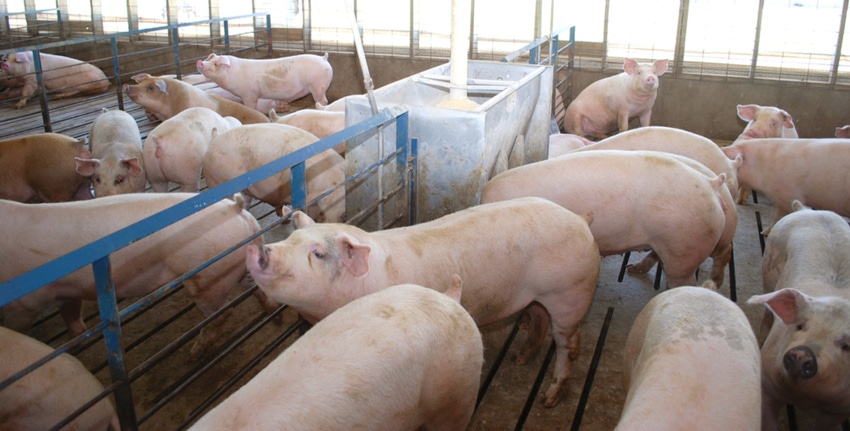Following processing plant closures, producers build flexibility into marketing schedules and work to slow finishing-phase growth rate.
April 21, 2020

The recent closing of meat packing plants and processing facilities in the Midwest and other parts of the U.S. due to the global COVID-19 pandemic is having a trickle-down effect on swine producers, according to Kansas State University livestock specialist Joel DeRouchey.
“Plants and processing facilities closing or cutting back on the number of shifts they are running is putting pressure on the U.S. pork supply in terms of marketing pigs in a timely manner,” DeRouchey said. “It’s regional to a degree, and some places are worse off than others, depending on the packing situation in that area.”
DeRouchey, a swine nutritionist, noted that the industry operates on a “fixed-time basis,” meaning that each step in the pigs’ growth is on a time schedule.
“Sows are farrowing and pigs are being weaned, [and] then they are in the nurseries and they need to go to a finisher. … When we get these disruptions where we can’t empty the marketing barns or the finishing barns, that creates a bottleneck all the way back,” he said.
What some producers have tried to do, DeRouchey said, is build a bit of flexibility into marketing their animals by pulling back on the average weight at which pigs are sold. For example, instead of selling pigs at 280 lb., the market weight may be reduced to 270 lb. “to get ahead of this delayed marketing situation before it fully becomes an issue,” he said.
“What that does is it creates a buffer so that if a marketing disruption comes, their inventory of market pigs is a little lighter so that you have room in those barns to have some additional days,” he explained. "By building in some extra time, that allows producers to have a little flexibility.”
DeRouchey added that adjusting the swine diet can also buy some time.
“We are able to target the last 50-70 lb. in the pig’s growth,” he said. “We can implement different diet strategies to make sure we remove feed additives, reduce diet amino acid levels by lowering soybean meal and feed a low-energy diet so that we don’t promote extra growth right now.” Most strategies also come with a cost savings to producers, he said.
DeRouchey added that other strategies to decrease feed intake may include adjusting feeders to a lower feed pan coverage of 15-20%, having a warmer barn environment and increasing stocking rates.
In any case, DeRouchey encouraged producers to work with a swine nutritionist or farm consultant before implementing new strategies.
“The thing about these strategies is that it does not compromise meat quality, pork safety or the welfare of pigs,” DeRouchey said. “It just means that there may be less pork available. This is about moving them to a level that reduces their rate of growth but does not put them into any sort of welfare or immuno-compromised situation that would impact the health or quality of meat those pigs produce.”
DeRouchey noted that while the swine industry is feeling a pinch right now, it mirrors much of the wider agriculture industry, which is seeing a drop in prices in nearly every area.
“It is one of those times that, again, we need to remember to be as creative and innovative as possible,” he said. “When we’re making money in this industry, we still need to be as efficient as we can to maximize that. Right now, we’re losing money, so we have to minimize the losses through management practices, too. It’s all cumulative over time.”
You May Also Like


.png?width=300&auto=webp&quality=80&disable=upscale)
